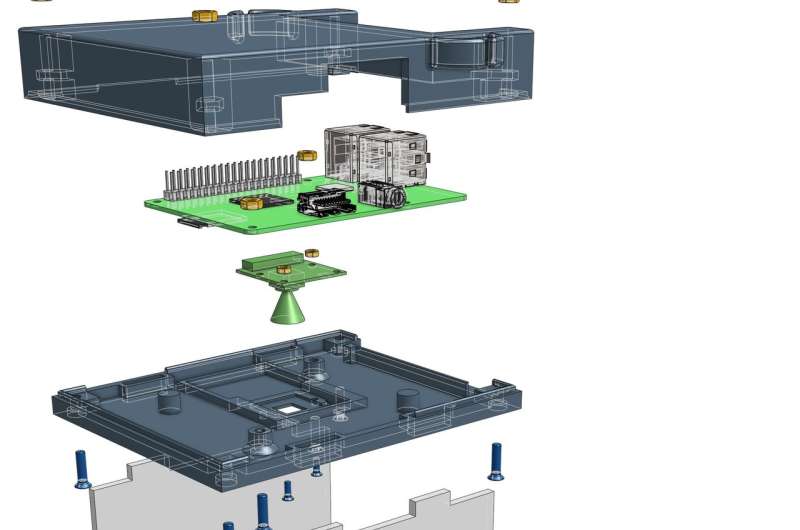Studying insect behavior? Make yourself an ethoscope

Fruit flies are a common research animal in neuroscience and behavioral studies because of their surprising similarities to humans. The mysteries of a broad range of human conditions can be studied in detail in these organisms, however this often requires the use of expensive custom equipment. In a Community Page publishing 19 October in the open access journal PLOS Biology, Dr Giorgio Gilestro from Imperial College London and colleagues present the ethoscope—a cheap, easy-to-use and self-made customisable piece of equipment of their invention that can be used to study flies' behavior.
Ethoscopes can be made using a 3D-printed chassis—or even one made of folded card or LEGO—combined with a simple Raspberry Pi computer and a camera. All software and construction specifications are freely available online and allow simultaneous recording of the behavior of many flies at once.
Studies on fly activity usually involve researchers watching video recordings and manually scoring each fly's movements; ethoscopes can do this automatically, saving researchers time. As well as simply recording the fly's behavior, the ethoscope can also be customised to manipulate the fly. For example, the team at Imperial College London have used custom ethoscopes to study sleep deprivation by waking flies up when no movement is detected.
The ethoscope could be customised for a range of different scenarios: "We can programme the machine to send stimuli to the flies only when they behave in a certain way. For example, the robots can be programmed to give flies rewards only if they complete a learned task," said Dr Gilestro. "The ethoscope is going to provide neuroscientists with a very new powerful tool to study, for instance, the biology of learning and memory or the function of sleep."
"Another possible use of ethoscopes is the adaptation of the platform to detect behavior of other animals; clearly, adapting ethoscopes to work with other small insects similar to Drosophila should be an easy task, and tracking behavior of even smaller animals may be possible using lenses."
More information: Geissmann Q, Garcia Rodriguez L, Beckwith EJ, French AS, Jamasb AR, Gilestro GF (2017) Ethoscopes: An open platform for high-throughput ethomics. PLoS Biol 15(10): e2003026. doi.org/10.1371/journal.pbio.2003026
Journal information: PLoS Biology
Provided by Public Library of Science





















